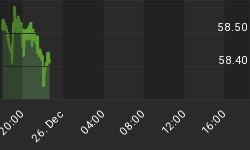There is a lot of noise out there and the wide swings in the market are reflective of that fact. There is a lot of rumor (news?) driving prices in both directions. Economic data has been weak, but why pay attention to the facts when there is always the hope that the next data point might be better. The technicals seem to be saying one thing, and the fundamentals are suggesting another. All of these factors are creating a market where you feel like a king one day and a bum the next. Yes, there are a lot of crosscurrents.
On the technical side, two of my SP500 models have given buy signals; I discussed these set ups here. These are trend following strategies that have been triggered or born of the recent upward momentum in the markets. Whipsaws (i.e., bad signals)? Difficult to know until after the fact, but this is usually how new trends start. A strong thrust upward, then the price action settles into a nice groove.
The fundamental picture is clearly less supportive of prices. My real time recession watch indicator is positive, and there is a high likelihood that we are already in a recession. The last time this indicator had us on a recession watch was in August, 2010, but the Fed launched QE2 thus altering the normal trajectory of the economy for awhile at least. But markets can go higher in recessions, and prices often lead the economy out of a recession.
Other headwinds are reflected in the price action coming from other markets. To most market observers, the market only has two modes -- "risk on" and "risk off". On "risk on" days, equities and commodities tend to outperform dramatically. On "risk off" days, Treasury bonds and the Dollar are the winners. From this perspective, both the Dollar Index and Treasury bonds are currently in bullish trends that should persist for a while longer. Last August, 2010, the market took off (i.e., "risk on") once these issues were in established down trends from a price perspective. That is not happening now, and I don't believe it is going to happen anytime soon.
So what to do? Typically, recessions end when prices are firmly above the 10 month simple moving average of the SP500, so this is an important technical hurdle to watch, and this might be a sign that the Fed or ECB or China has come to the rescue of the markets. I would look for the Dollar and Treasury bonds to break down as well. This should clear the way for equities. Can our financial leaders pull another rabbit out of the hat? We know they will try. Fiscal policy produces more drama than substance, and economic policy appears to be in a state of fatigue. There is only so much stimulus can do.















